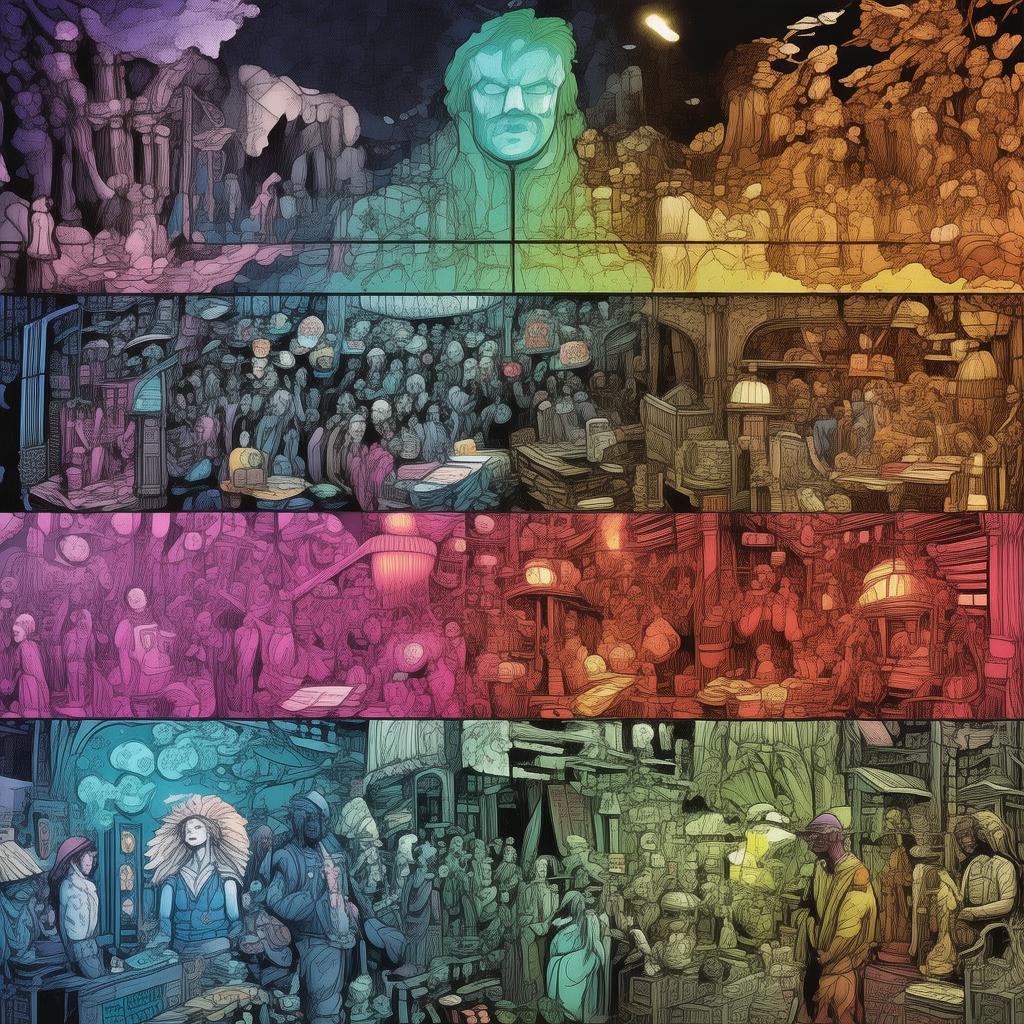The Last Panel: A Journey to Colorful Redemption
In the bustling metropolis of Neo-Tokyo, where the neon lights flicker in a symphony of color and sound, there lived a young artist named Kaito. Kaito's life was as monochromatic as his grayscale sketches. Born into a world where skin color was the only thing that mattered, he was destined to be an outcast. His skin, a pale shade of white, was a mark of dishonor in a society where only the vibrant hues of the elite were revered.
Kaito's father, a legendary comic artist known for his vibrant and emotionally charged illustrations, had vanished without a trace when Kaito was but a child. His mother, a woman of deep roots in the underbelly of Neo-Tokyo's society, had instilled in him a love for art, but also the bitter truth of his own race. She told him stories of his father's brilliance, his ability to capture the essence of human emotion in every line and hue, and of the day he left their lives behind, leaving behind a void that no one could fill.
The young artist spent his days in the shadows, drawing in the margins of life, his sketches a silent protest against the color-coded society. His dream was to become a comic artist like his father, to bring color to the world, but his own skin color seemed to be a constant reminder of his limitations.
One day, Kaito stumbled upon a hidden archive in his father's old studio. There, amidst the dust and cobwebs, he found a series of sketches that were unlike anything he had ever seen. They were in full color, full of life and emotion, and they were of his father's. The artist's hand was clear, the emotions raw, and the stories told through these panels were of a world that Kaito had never known.

As he delved deeper into his father's work, he discovered that the man who had left him was not the one he had imagined. The man who had drawn these vibrant stories was a man of passion and compassion, a man who had used his art to fight against the color-coded society. It was in these panels that Kaito found his voice, his purpose, and his identity.
With newfound resolve, Kaito began to draw his own comic, one that would tell the story of his father's journey and his own quest for acceptance. He used his father's legacy as a foundation, but he added his own twist, infusing his own experiences and emotions into the pages.
The story of Kaito's comic spread like wildfire. People who had never seen a comic before were drawn to the panels, to the stories that were both familiar and alien, to the emotions that were both their own and shared by others. Kaito's work became a beacon of hope in a world that was often dark and gray.
But as his fame grew, so did the pressure. The elite of Neo-Tokyo saw Kaito's success as a threat to their own status. They wanted to silence him, to erase the color he had brought to their monochromatic world. Kaito found himself in the crosshairs of a society that he had once tried to escape.
In the climax of his story, Kaito's comic was banned, his studio raided, and he was forced into hiding. But he refused to be silenced. With the help of his newfound allies, a group of artists and activists, Kaito found a way to continue his work. He used the power of the internet, his comic becoming a digital underground movement that defied the color-coded society.
In the end, Kaito's story was more than just a comic. It was a call to action, a reminder that the true color of a person is not in their skin, but in their heart and soul. It was a testament to the power of art to heal, to inspire, and to bring hope.
The Last Panel: A Journey to Colorful Redemption was not just a comic, it was a revolution. And in the end, it was Kaito who found the color he had been searching for all his life, not in the hues of his skin, but in the rich tapestry of his art and the indomitable spirit of his father.
✨ Original Statement ✨
All articles published on this website (including but not limited to text, images, videos, and other content) are original or authorized for reposting and are protected by relevant laws. Without the explicit written permission of this website, no individual or organization may copy, modify, repost, or use the content for commercial purposes.
If you need to quote or cooperate, please contact this site for authorization. We reserve the right to pursue legal responsibility for any unauthorized use.
Hereby declared.









